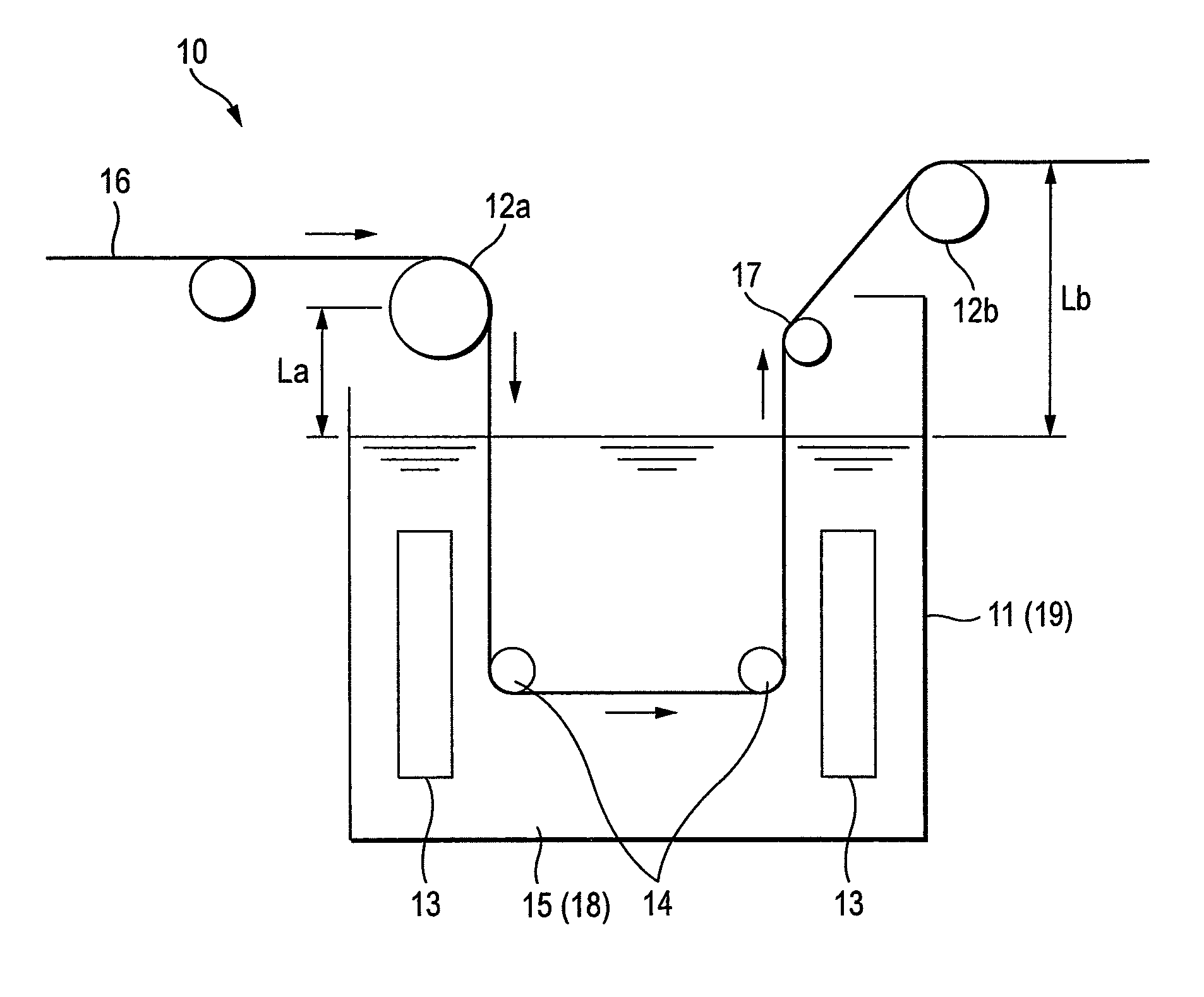Conductive film and manufacturing method thereof, and transparent electromagnetic shielding film
a technology of electromagnetic shielding film and conductive film, which is applied in the field of transparent and conductive electromagnetic shielding film for plasma display, can solve the problems of increasing electromagnetic interference (emi), affecting the operation of such a device, and causing malfunction, and achieves the effects of small change in color taste with time, good adhesion, and hardly peeling of the blackening layer
- Summary
- Abstract
- Description
- Claims
- Application Information
AI Technical Summary
Benefits of technology
Problems solved by technology
Method used
Image
Examples
embodiment
[0292]The invention is more specifically described below with reference to the following Examples. Incidentally, materials, use amounts, proportions, treatment contents, treatment procedures, and so on shown in the following Examples can be properly altered so far as the gist of the invention is not deviated. Accordingly, it should not be construed that the scope of the invention is limited by the following specific examples.
example 1
(Preparation of Silver Halide Photosensitive Material)
[0293]An emulsion containing 10.0 g of gelatin based on 60 g of Ag in an aqueous medium and containing a silver iodobromochloride grain (I=0.2% by mole, Br=40% by mole) having a sphere-corresponding average grain size of 0.1 μm was prepared.
[0294]Also, K3Rh2Br9 and K2IrCl6 were added in this emulsion in a concentration of 10−7 (mole / mole of Ag), thereby doping the silver bromide grain with an Rh ion and an Ir ion. Na2PdCl4 was added in this emulsion, and the mixture was subjected to gold-sulfur sensitization with chloroauric acid and sodium thiosulfate. Thereafter, the resulting emulsion was coated together with a gelatin film-hardener in a coating amount of silver of 1 g / m2 on a support made of polyethylene terephthalate (PET). On that occasion, an Ag / gelatin volume ratio was set up at 1 / 2.
[0295]The PET support used had a thickness of 90 μm and a width of 30 cm. The emulsion was coated in a width of 25 cm on the PET support havi...
example 2
[0338]Under the condition of Ni:Zn=7:1 in Example 1, the treatment was carried out by changing the anode of the blackening tank from the carbon electrode to a nickel electrode (by using 0.1N sulfuric acid for the pH adjustment) and using the following blackening liquid. As a result, defect and unevenness of the metal mesh film and staining by a transparent deposit were not observed at all; and in addition, the white stain of the film edge as observed in Example 1 was not observed at all.
PUM
| Property | Measurement | Unit |
|---|---|---|
| mass ratio | aaaaa | aaaaa |
| mass ratio | aaaaa | aaaaa |
| mass ratio | aaaaa | aaaaa |
Abstract
Description
Claims
Application Information
 Login to View More
Login to View More - R&D
- Intellectual Property
- Life Sciences
- Materials
- Tech Scout
- Unparalleled Data Quality
- Higher Quality Content
- 60% Fewer Hallucinations
Browse by: Latest US Patents, China's latest patents, Technical Efficacy Thesaurus, Application Domain, Technology Topic, Popular Technical Reports.
© 2025 PatSnap. All rights reserved.Legal|Privacy policy|Modern Slavery Act Transparency Statement|Sitemap|About US| Contact US: help@patsnap.com


